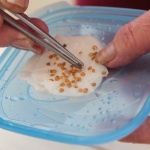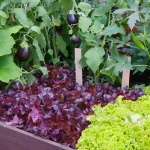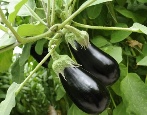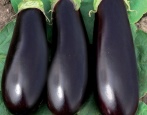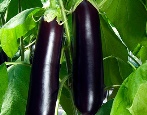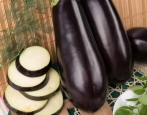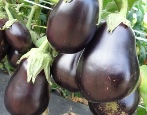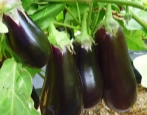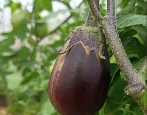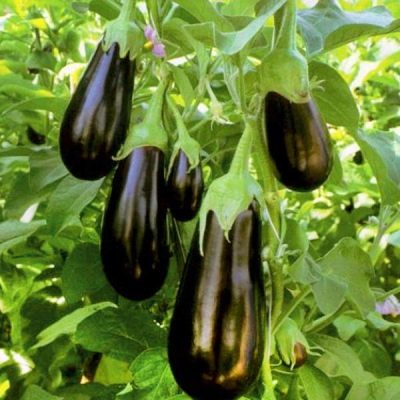
- Authors: Klimenko N.N., Kostenko A.N., Sergeev V.V.
- Year of approval: 2010
- Growth type: medium-sized
- Fruit shape: cylindrical
- Fruit weight, g: 150-200
- Yield: high yielding
- Keeping quality: excellent
- Transportability: excellent
- Ripening terms: mid-season
- Color of the pulp: whitish
Eggplant Galich is a popular variety in Russia that attracts gardeners with high yields and strong immunity. It is worth considering in more detail the features of the culture, as well as the planting scheme for eggplant and the features of cultivation.
Description of the variety
Galich belongs to the group of plants with a medium early ripening period. One of the features of the variety is its increased yield, as well as demanding heat. Specifications:
bushes are compact;
stems - powerful, withstand large fruits;
leaves - medium, dark green, slightly wrinkled;
flowers are small.
Eggplant Galich is grown mainly in greenhouse conditions, but in the southern regions it is possible to plant it in open ground.
Characteristics of the appearance of plants and fruits
Compact bushes Galich do not require much space on the site, which is one of the advantages of the variety. Characteristics of the fruits of the variety:
eggplant shape - cylindrical;
length - up to 18 cm;
weight - up to 200 g;
the skin is glossy, with a deep purple hue.
The strong skin makes long-distance transportation possible. Therefore, whole enterprises are engaged in the cultivation of eggplant, as well as the owners of private garden plots.
Purpose and taste
Eggplant fruits Galich have a pleasant taste without bitterness, for which they are appreciated by gardeners. Vegetables are used to prepare first and second courses, salads. And also eggplants are frozen, canned.
Ripening terms
On average, fruits are formed on bushes in 110-145 days, depending on growing conditions. When eggplant is planted in a greenhouse, the ripening time is noticeably reduced.
Yield
The yield indicator averages 6-7.5 kg per square meter of the garden. If agrotechnical recommendations are followed, it will be possible to increase it.
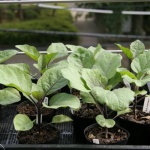
To get a tasty and bountiful eggplant crop, you must first grow strong and healthy seedlings. This culture is considered very capricious, therefore, you need to take care of seedlings when growing at home as correctly and carefully as possible.
Landing scheme
Regardless of the region, the cultivation of the Galich variety implies the use of seedlings. Main steps.
Preparation of planting material. This is the only way to achieve increased yields. In the process of preparation, the seeds are soaked in a glass of water, thus carrying out a selection, removing empty samples floating to the surface. Next, the seeds are subjected to heat treatment, warming them up for several days. Additionally, the seed is disinfected by soaking in potassium permanganate. The last step before sowing is spraying with growth stimulants, which can be bought at a specialty gardening store.
Disembarkation. Seeds are sown in previously prepared containers with a fertile mixture about 2 months before transplanting into open ground or greenhouse.You can also use peat pots. Then each container is watered abundantly and covered with transparent material.
Transfer. It is carried out when up to 5-6 whole leaves appear on the stems, and the bush rises to 10 cm.The planting is usually carried out closer to the end of May or the beginning of June, when the air temperature rises above 15 degrees Celsius, and the soil warms up to at least 10 degrees.
The beds for transplanting seedlings must be prepared in advance, making sure that the acidity is at a neutral level. If not, the soil should be thoroughly fertilized and loosened. Usually organics are used as fertilizers, but mineral complexes are also suitable.
Growing and care
The only requirement of the Galich variety is growing in a warm place. Additional advice from gardeners.
Watering. Water the plants so that the soil remains moist, but not much. At the same time, when growing eggplant in open areas, watering should be regulated depending on climatic conditions. For example, in a drought, watering should be increased, and in rains, on the contrary, it should be reduced, or even stopped for a while.
Loosening. The procedure is carried out every time after watering. With its help, it is possible to saturate the roots with oxygen many times faster. And also at this stage, weeding the bushes is carried out in order to prevent the spread of diseases.
Top dressing. They are carried out no more than 3-4 times per season, fertilizing the bushes during the period of active growth, flowering and fruiting. You can determine the need for fertilization by the color of the leaves or the state of flowers and fruits. Usually, gardeners use organic and mineral compounds, less often they resort to complex fertilizers.
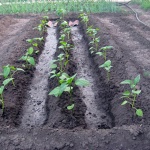
Planting eggplant is one of the most important stages in growing. When choosing a place for eggplants on your site, it is important to remember that this culture should be in warm soil, constantly illuminated by the sun. The plant is also very fond of spacious, open spaces, since its roots can grow over sufficient areas.
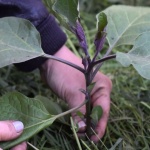

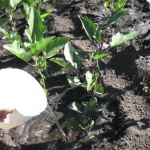
Soil requirements
Galich prefers to grow in fertile soils, which have time to warm up to the desired temperature by the beginning of summer. Recommendations for choosing a site:
preference should be given to sunny places or greenhouses;
the groundwater level should be low so that the roots of the plant do not begin to rot;
the soil should be fertile and not acidic.
Before planting eggplants, it is recommended to thoroughly fertilize the soil with organic compounds in the form of manure or wood ash. Then the seedlings will take root faster.
Disease and pest resistance
Eggplant Galich cannot be called the most resistant variety, but it successfully resists most pests and diseases common for this crop. To protect the culture from other negative factors, preventive treatment with special formulations or folk remedies should be carried out.It is better to spray the bushes before flowering and fruiting.

Eggplant is one of the most demanding crops. For its successful cultivation, it is necessary to create optimal conditions, as well as to carry out prevention and fight against diseases and pests. Eggplant often infects both fungal and viral diseases. If treatment is not started on time, you can completely lose the crop.
